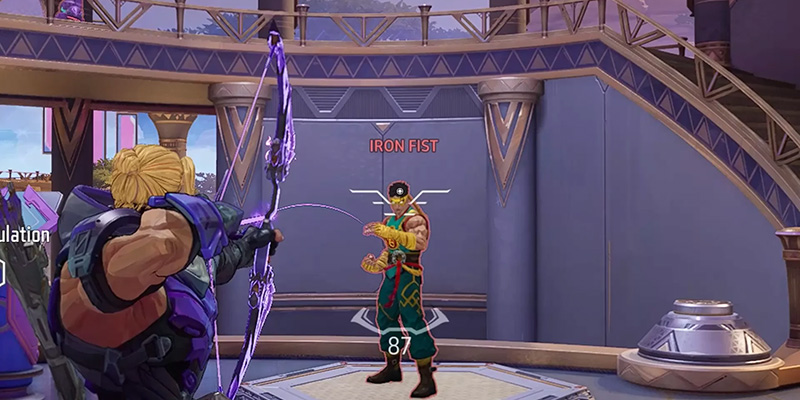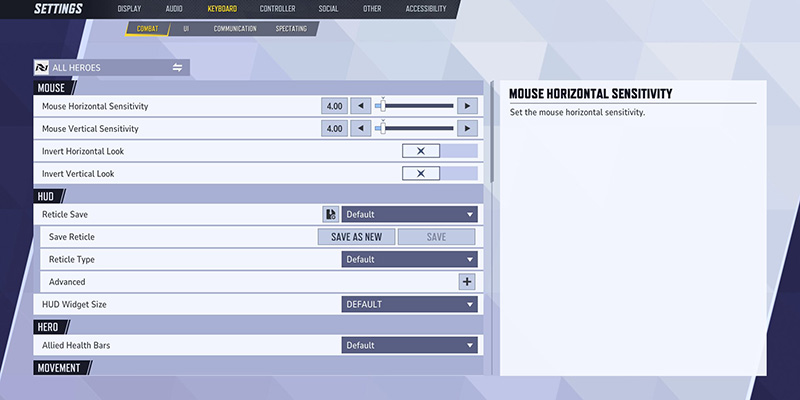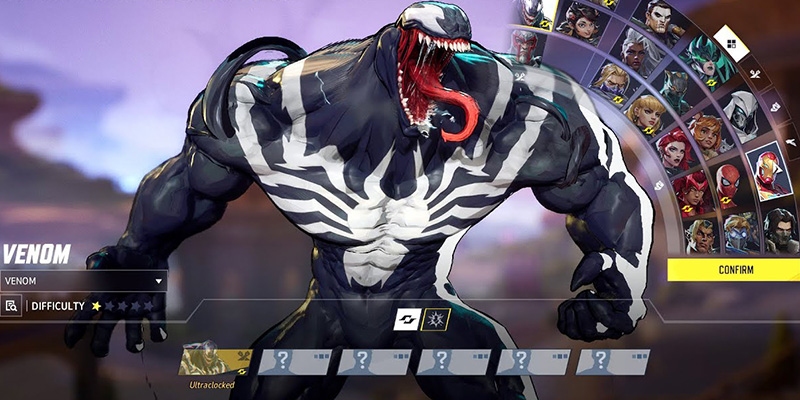Welcome to the ultimate showdown for your hands in Marvel Rivals! This isn't just about picking your favorite hero; it's about choosing the right tool for the job. Marvel Rivals, a fast-paced 6v6 hero shooter, demands quick reflexes and precise aim. Whether you're a couch-comfort enthusiast or a desk-dwelling fragger, your input device – controller or mouse & keyboard (M&K) – will significantly shape your gameplay. This guide will break down everything you need to know to make an informed choice or fine-tune your current setup.
Marvel Rivals positions itself as a competitive hero shooter, similar to titles like Overwatch or Valorant, where team coordination and individual skill are paramount. Gameplay revolves around objective-based modes such as Convoy (escorting a vehicle), Domination (capturing a single point), and Conquest (a mix of capturing a point then escorting a vehicle). The game's third-person camera view also plays a role in how each input method feels, an aspect that will be explored further.

Choosing Your Weapon
Before diving deep, a quick comparison can help frame the discussion:
| Feature | Controller | Mouse & Keyboard (M&K) |
|---|---|---|
| Pros | Comfort, intuitive movement for some, accessibility, rumble feedback, potentially better for certain heroes | Highest aiming precision, fast reactions/flicks, more customizable buttons, 1:1 input (with correct settings) |
| Cons | Lower aiming precision ceiling, slower turning/flicks, reliance on aim assist (often weak on PC) | Steeper learning curve for some, requires desk setup, can be less "relaxed" |
| Best For | Relaxed play, some less aim-intensive heroes, players prioritizing comfort or familiarity with gamepads | Competitive play, precision-demanding heroes, players prioritizing raw accuracy and speed |
| Aim Assist (PC) | Present, but widely reported as very weak or inconsistent | Not applicable (relies on raw player skill) |
The choice of input device in a third-person shooter like Marvel Rivals carries nuances beyond raw statistics. While mouse and keyboard setups often boast superior aiming precision, the "feel" of controlling a character from an over-the-shoulder perspective can make controllers seem more natural for movement to some players. In a game featuring iconic Marvel heroes, how "superhero-like" the controls make one feel can be a significant, if subjective, factor in enjoyment, potentially influencing the choice as much as competitive aspirations.
This disparity in aim assist effectiveness, particularly for PC controller users who may feel they have the weakest version of it while still facing M&K opponents, can lead to frustration and influence how players engage with mixed-input lobbies. The developers' firm stance against mouse and keyboard adapters on consoles, which are used to exploit aim assist, underscores a commitment to fair play, yet the current state of aim assist on PC presents an ongoing challenge to this ideal in cross-play scenarios.
The Controller Experience
Controllers have long been a staple for many gamers, offering a blend of comfort and accessibility. However, in a competitive shooter environment, they also present unique challenges.
- Comfort and accessibility for relaxed gaming
- Familiar and intuitive for console players
- Rumble feedback enhances immersion
- Viable for certain heroes and playstyles
- Area-of-effect attacks and support roles work well
- Inherent precision cap compared to mouse
- Slower turning speed for quick maneuvers
- Relies heavily on aim assist effectiveness
- Limited simultaneous input capabilities
- Challenging for high-mobility heroes
The most immediate advantage of a controller is often comfort and accessibility. For those who prefer gaming on a couch or in a more relaxed posture, controllers are the go-to choice. Many players, especially those with a background in console gaming, find controllers more familiar and intuitive to pick up and play.
Some controllers enhance immersion through rumble feedback. While many competitive players disable vibration to avoid distractions, it can add a tactile dimension to gameplay for those prioritizing casual enjoyment, making abilities feel more impactful. For instance, one player mentioned that playing Captain America on a controller felt better specifically because of the rumble feedback during his run.
Aim Assist in Marvel Rivals: The Great PC Debate
Aim assist is a feature designed to help controller users by subtly guiding their crosshair towards targets or slowing down sensitivity when the reticle is near an enemy. It's intended as a balancing mechanism, especially in games with cross-platform play where controller users compete against M&K players.
This situation creates an "aim assist paradox" on PC. The feature is intended to balance input methods, but its current weak implementation in Marvel Rivals on PC arguably fails to do so effectively, leading to an imbalance. Yet, there's a segment of the M&K player base that often views any level of aim assist as an unfair advantage or a "crutch". Developers face a difficult challenge: strengthening PC aim assist could draw criticism from M&K players, while leaving it weak alienates controller users.
Recommended Controller Settings for Marvel Rivals
While personal preference is key, here's a table of suggested starting controller settings based on community guides and discussions. These aim to provide a solid baseline for players looking to optimize their controller experience.
| Setting | Suggested Value | Notes |
|---|---|---|
| Horizontal Sensitivity | 175-200 | Adjust based on hero and comfort; some prefer higher for mobility |
| Vertical Sensitivity | 100-200 (often lower than horizontal) | Match to horizontal or slightly lower; personal preference |
| Aim Sensitivity Curve Type | Linear Curve | Recommended for consistency and 1:1 feel. Dual-Zone S-Curve is an alternative for an Overwatch-like feel |
| Minimum Input Deadzone | 1 (or lowest without stick drift) | Minimizes delay before stick input registers |
| Aim Assist Window Size | 40-50 (default range) | Some players prefer smaller (20-35) to avoid unwanted target pulls in groups |
| Aim Assist Strength | 80-100 (default range) | Lower if it feels too intrusive |
| Vibration | Off | Recommended for competitive play to avoid distractions |
Mouse & Keyboard Setup
For many competitive shooter players, the mouse and keyboard (M&K) combination is the undisputed champion of input methods, offering unparalleled precision and a high degree of customization.

- Unmatched aiming precision using full arm movement
- Faster reaction times and fluid crosshair movement
- Extensive DPI and sensitivity customization
- Vast array of easily accessible buttons
- More simultaneous actions possible
- Steeper learning curve for newcomers
- Requires dedicated desk and chair setup
- Less portable than controllers
- Can be overwhelming for complex keybinds
- Less relaxed gaming posture
The primary advantage of M&K is unmatched aiming precision. Utilizing the entire arm, wrist, and fingers for mouse control allows for incredibly fine and accurate adjustments, essential for tracking targets, executing flick shots, and consistently landing critical hits like headshots. This level of control is difficult to replicate with analog sticks.
Achieving 1:1 Aim: Raw Input and No More Acceleration!
For competitive M&K play, achieving a 1:1 relationship between physical mouse movement and on-screen cursor movement is paramount. Two culprits often disrupt this: mouse acceleration and mouse smoothing.
- Mouse acceleration modifies how far the crosshair moves based on the speed of mouse movement, not just the physical distance covered. This inconsistency makes building muscle memory for aiming incredibly difficult, as the same hand movement can produce different results depending on how quickly it's executed.
- Mouse smoothing introduces an artificial delay or averaging of mouse inputs, which can make aim feel less responsive or "floaty". Both features are generally considered detrimental for precise, competitive aiming.
To ensure raw input, players should navigate to the in-game settings (Keyboard tab → Combat sub-category → Mouse section) and verify that both "Mouse Acceleration" and "Mouse Smoothing" are set to OFF.
Recommended M&K Settings for Marvel Rivals
Optimizing M&K settings is crucial for leveraging their precision advantage. The following table provides suggested starting points:
| Setting | Suggested Value | Notes |
|---|---|---|
| Mouse DPI | 400-800 (for precision) | Higher DPI (e.g., 1600, used by some pros) can work with lower in-game sensitivity. Experiment to find what suits your playstyle |
| Polling Rate | 1000Hz | Provides the most responsive experience and smoother tracking |
| In-Game Horizontal Sens. | 2.5 - 4.0 (starting range) | Adjust for comfortable 180° turns and tracking. Keep equal to Vertical Sensitivity for muscle memory |
| Mouse Acceleration | OFF | Essential for 1:1 raw input and muscle memory |
| Mouse Smoothing | OFF | Ensures responsive, direct input |
Best Input for Different Heroes
The "best" input method can also depend heavily on the hero you're playing and your preferred playstyle. Marvel Rivals features diverse characters divided into Duelist, Vanguard, and Strategist roles, each with unique abilities and demands.

General Archetype Leanings
M&K Often Preferred: Heroes primarily focused on dealing damage, especially those reliant on precision like Hawkeye or Black Widow, generally benefit most from the superior aiming accuracy and quick target acquisition offered by M&K.
Controller Viability: Some melee-focused duelists such as Wolverine or Iron Fist, or those with more forgiving AoE or projectile attacks like Star-Lord's abilities or Storm, can be played effectively on a controller, particularly if player comfort is a priority.
Mixed Bag: Input preference for Vanguards can vary. Some, like Magneto or Doctor Strange, who may rely more on ability placement and holding strategic positions, can be quite effective on a controller.
M&K Edge: Nevertheless, M&K can offer advantages such as faster shield deployment and angling, quicker reactions for peeling for teammates, or more precise initiation with certain abilities.
Often Controller-Friendly: Many Strategists focus on healing, buffing, or providing utility, abilities that may not require the same level of pinpoint offensive aiming as Duelists. Characters such as Jeff the Landshark, Adam Warlock, Cloak & Dagger, or Mantis are often recommended as good picks for controller players.
M&K Still Useful: M&K can still provide benefits like faster friendly targeting for heals and buffs in chaotic team fights or allow for more precise placement of utility abilities.
Heroes That Can Shine on Controller
Based on community feedback and game guides, several heroes are frequently mentioned as being viable or even comfortable on a controller:
- Scarlet Witch: Her abilities often don't require pinpoint precision, making her a popular controller-friendly choice.
- Jeff the Landshark: His kit is not heavily reliant on precise aim.
- Cloak & Dagger: Their abilities tend to be homing, area-of-effect, or tagged, reducing the need for exact aiming.
- Adam Warlock: His charged basic attack is described as forgiving, and his abilities are generally easy to use without demanding high precision.
- Magneto & Dr. Strange (Vanguards): These tanks can be effectively controlled with a gamepad, focusing on ability usage and positioning.
- The Punisher (Surprisingly): Some players find that the aim assist, even if weak, pairs well with his rifle at range when using a controller.
- Melee-focused heroes (e.g., Wolverine, Iron Fist): Can feel more akin to playing a third-person action game. Venom, especially with "Auto-Swing" disabled and "Hold to Swing" enabled, can also feel good on a controller.
Heroes Demanding M&K Precision
Conversely, certain heroes are widely considered to benefit significantly from, or almost require, the precision of M&K, especially on PC:
- Hawkeye & Black Widow: As classic sniper and precision-based archetypes, their effectiveness hinges on accurate aiming. Some players even consider playing Hawkeye with a controller in PC lobbies as detrimental to the team.
- High-Mobility/Agile Heroes (e.g., Spider-Man, Black Panther): These characters require fast turns, precise parkour movements, and quick ability execution, all of which are generally better facilitated by M&K.
- Iron Man: Managing flight controls while simultaneously aiming multiple abilities can be particularly challenging on a controller.
- Luna Snow: Her gameplay, which often involves tight turns and kiting, benefits from the responsiveness of M&K.
Finding Your Edge
Choosing between a controller and a mouse & keyboard in Marvel Rivals is a decision with significant implications for gameplay experience and competitive potential. M&K generally offers the pinnacle of aiming precision and customization, making it the preferred choice for many competitive players, especially for heroes demanding accuracy. Controllers provide comfort, accessibility, and a more relaxed playstyle, but this comes with a notable caveat in Marvel Rivals on PC: the aim assist is widely reported as being very weak, which can create a tangible disadvantage against M&K users.
Consider your long-term goals: are you aiming for casual fun with friends, or do you aspire to climb the competitive ranks and master mechanically demanding heroes? The "best input" is the one that best supports those personal goals and playstyle preferences.
The choice of input method is not just a technical one; it becomes part of a player's overall strategy for enjoying and competing in Marvel Rivals. It's also worth remembering that the game's landscape can evolve. Features like aim assist effectiveness or input handling can change with patches and updates, as seen with the critical fix for mouse acceleration. Staying informed about such changes will always be beneficial.
The initial input choice can also subtly influence long-term skill development. An M&K player will naturally hone raw aiming mechanics, while a PC controller player, given the current aim assist situation, might develop stronger game sense and ability usage on less aim-intensive heroes. However, their raw mechanical aim might not reach the same peaks as an M&K counterpart. This means that if a player decides to switch inputs later, for instance, from controller to M&K to play more precision-based heroes, they might face a substantial relearning curve for fundamental aiming skills, making the initial choice more impactful than just immediate comfort.
Finally, the debate around input methods and aim assist often fosters strong opinions within gaming communities. The existence of devices designed to unfairly exploit aim assist by using M&K on consoles while emulating a controller further fuels this "input tribalism". Beyond the technical pros and cons, the social perception of input choice can matter. By understanding the objective differences and acknowledging varied perspectives, players can hopefully contribute to a more informed and constructive dialogue within the Marvel Rivals community. Ultimately, the goal is to find the setup that allows each player to unleash their inner hero and have the most fun in the arena.
